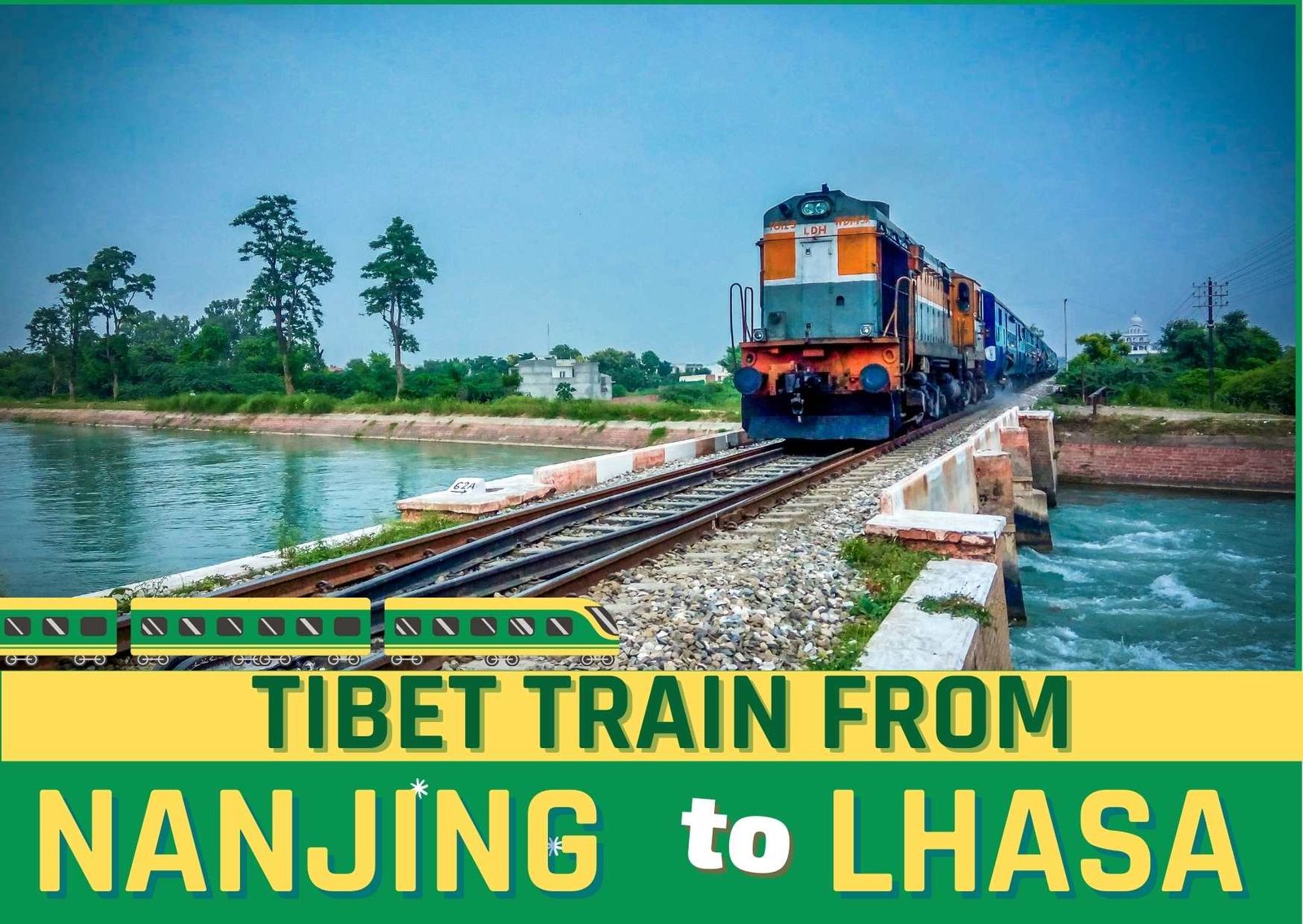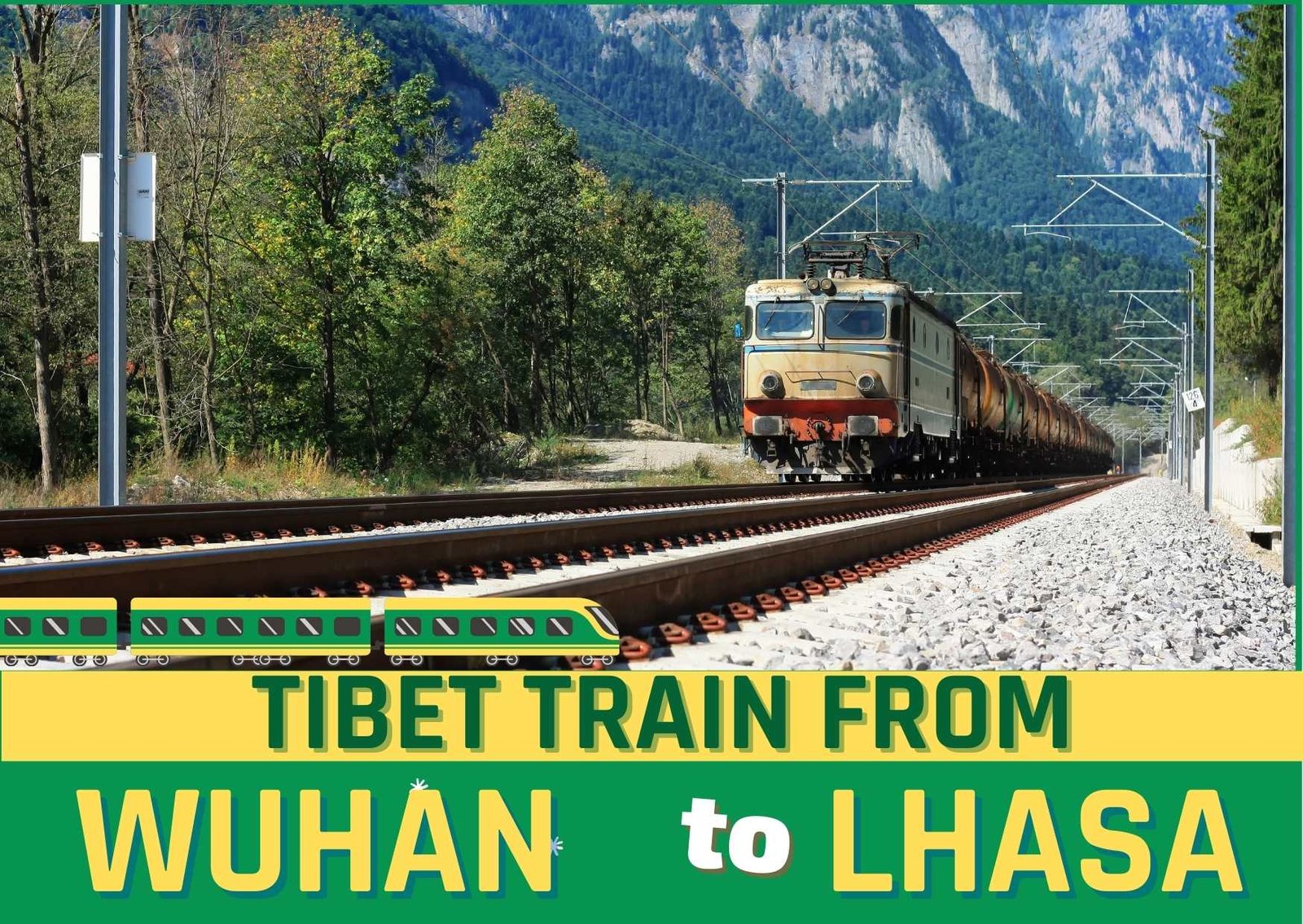Many individuals aspire to see the Yunnan-Tibet railway come to fruition. Despite the current lack of railway connectivity, the area’s stunning scenery draws in numerous visitors each year who opt to travel by road or even cycle from Yunnan to Tibet. The railway, which passes through Dali, Lijiang, and Shangri-La before entering Tibet, would undoubtedly become the most sought-after tourist route due to the breathtaking landscapes along the way. Major cities en route: Kunming, Guangtong, Dali, Lijiang, Shangri-La, Deqin, Mangkang, Bome, Nyingchi, Tsetang, Gonggar, and Lhasa.

Engineering marvellous of Yunnan-Tibet Railway
The Yunnan-Tibet Railway has been part of national planning for a considerable period. It was officially incorporated into the “Medium and Long-Term Railway Network Planning” of the country in 2016, and it is also considered one of the five most crucial railways leading to Tibet. It is expected to be the most picturesque of the five railways, but its construction will be the most challenging. As for when the Yunnan-Tibet Railway will be completed and operational, it is impossible to provide an exact timeline for the entire operation. However, some sections have already been opened, while others are still under construction. By examining the individual segments, we can gain a better understanding of the Yunnan-Tibet Railway’s particular circumstances.
A major railway line connects Yunnan Tibet Railway line
The Yunnan Tibet Railway commences from Kunming, the principal city of Yunnan Province, and stretches towards west Guangdong. This particular section is a component of the Chengdu Kunming Railway. After arriving at Dali, the railway turns northwest towards Lijiang, which is known for its stunning Erhai Lake. Subsequently, the railway passes through the renowned Tiger Leaping Gorge and reaches Shangri-La.
As per the feasibility study report (FSR) undertaken by the China Railway No.2 Bureau, the proposed direction is that the railway track will traverse Luole Mountain and Baima Snow Mountain to reach Dechen, situated at the Tibet and Yunnan border. The railway will cross the Langtang River and Meri Snow Mountain to enter the Tibet area. Afterwards, the railway will merge with the Sichuan Tibet Railway in Markham of Qamdo in Tibet and ultimately connect to the Lhasa Nyingchi Railway. The final destination of the railway will be Lhasa.
Kunming Lhasa Railway Line
The Kunming-Lhasa Railway commences at Kunming and traverses Chuxiong, Dali, Lijiang, and Diqing before entering Mangkang, Tibet. It intersects with the Sichuan-Tibet Railway, proceeds through Nyingchi, and ultimately reaches Lhasa. Certain parts of the route have already been inaugurated and put into use. The railway can be segmented into multiple sections, such as the Kunming-Guangzhou Railway, Guangda Railway, Dali Railway, Lixiang Railway, Xianglin Railway, Lhasa Nyingchi Railway, and more.

Kunming Chuxiong Railway Line
The railway line from Kunming to Chuxiong is known as the Kunming-Guangtong Railway. Upon reaching Guangtong, travellers have two options. They can head towards Chengdu, also part of the Chengdu-Kunming Line. Alternatively, they can connect with the Guangda Line to reach Dali and thus, form the Kunchu Line. The year 2017 marked the commencement of train services on the upgraded Kunming-Guangzhou line. Currently, the line is serviced by an EMU that can travel at a speed of 200 kilometres per hour.

Dali Lijiang Kunming Railway Line
The Dali Railway is not a newly built structure. It has been refurbished on the original old track. The train runs at a speed of 160 km/h and connects with Dali, allowing the bullet train from Kunming to reach Lijiang in just 3 hours. Currently, the line is operational.

Lijiang Shangrila Railway Line
The Lixiang Railway, which starts from Lijiang to Shangri-La, is under construction and will open in 2023. Travellers will be able to take the EMU train from Kunming to Shangri-La.
Shangri-la Nyingchi Railway Line
The Xianglin Railway, which runs from Shangri-La to Tibet’s Nyingchi, is in the feasibility study stage and has not yet been constructed. It is the most challenging section of the railway line in Yunnan and Tibet.
Lhasa Nyingchi Railway Line
The Lalin Railway refers to the rail line from Lhasa to Nyingchi. Construction is complete, and it open in 2021. It is a section of the Sichuan-Tibet line and part of the main line. The single line now being built has a design speed of 160 km/h. Moreover, the Tibet Tower Company built a public communication network for the line. The operator’s network signal coverage is also open, making it easier for passengers to travel and improving the railway’s operational quality. It also aids in handling emergencies such as rescue operations.

Based on this analysis, only the Shangri-la Nyingchi section of the Yunnan-Tibet Railway will remain closed by the end of 2021. The Xianglin Railway is 900 km long, accounting for almost half of the Yunnan-Tibet Railway’s total mileage. It is the most geologically complex section of the entire line, passing through the Hengduan Mountains. It is impossible to give an exact opening time. The Xianglin Railway is critical for the whole Yunnan-Tibet Railway’s connection.
The Yunnan-Tibet Railway’s significance extends beyond tourism and travel convenience. It is also a railway line of critical strategic importance at the national level. Therefore, the Yunnan-Tibet Railway will undoubtedly open; it is only a matter of time.
Transportation options from Yunnan to Tibet at the moment
Currently, travellers embarking on a Tibet Tour from Yunnan have two modes of transportation available: air travel and driving. The former is a faster but more expensive option, while the latter is more economical.
Air travel: Those who wish to fly from Kunming to Lhasa can choose from six direct flights and eight connecting flights daily, with a flight time of approximately three hours. Additionally, over 15 connecting flights are available for those wishing to travel to Nyingchi from Kunming.
Driving: The Yunnan Tibet Highway is renowned as “The Paradise of Road Trips,” and many tourists opt to self-drive along this route to experience the breathtaking scenery. Starting from Kunming and passing through Dali, Lijiang, and Shangri-La, the Yunnan Tibet Highway merges with the Sichuan Tibet Highway at Markam, spanning over 2,000 kilometres and taking around 10 days to reach Lhasa. The journey includes stunning views of snow-capped mountains, forests, glaciers, and grasslands, making it an exciting but challenging drive. However, it is not recommended for inexperienced drivers due to the complex road conditions.
Train travel: Currently, there are no direct trains to Lhasa from Yunnan. However, travellers who wish to experience train travel can take connecting trains from nearby cities such as Chengdu or Chongqing, which take over 40 hours. Please note that trains depart from these cities every other day, not daily.
The scenic route along the Yunnan Tibet Railway
The Yunnan Tibet Railway is one of the “five railways to Tibet” with the lowest average elevation. Dali, Lijiang, and Shangri-La are popular tourist destinations in Southeast China, providing visitors with opportunities to enjoy leisure activities such as exploring old towns or Erhai Lake, strolling through Dali during the blossom season, sunbathing and playing with cats in ethnic homestays, cycling around Lugu Lake, and exploring the “Lost Paradise” where holy snow-capped mountains stand. In addition to the scenic natural beauty, there are also many historical sites of interest along the railway, especially in the Yunnan and Tibet regions.
Tibet: Asia’s Strategic High Ground
In the eyes of military experts, Tibet stands as Asia’s sole strategic high ground. The long, complex border between China and India, stretching thousands of kilometers, remains largely unsettled. While the towering Himalayas act as a natural barrier, the military presence from India’s Ganges Plain is an ongoing concern. From the Doklam standoff and Galwan Valley clashes to the contested region of Southern Tibet, protecting Tibet is crucial as the world shifts focus back to territorial influence.
The Strategic Importance of Tibet’s Transportation Infrastructure
Access to Tibet is currently supported by four major roadways: the Qinghai-Tibet, Sichuan-Tibet, Yunnan-Tibet, and Xinjiang-Tibet highways. However, road infrastructure alone cannot meet strategic needs, prompting the construction of high-value railway lines. These include the Qinghai-Tibet Railway (completed), and the planned Sichuan-Tibet, Yunnan-Tibet, and Xinjiang-Tibet railways—all engineering marvels that are crucial to Tibet’s connectivity and security. Each railway is a feat of construction, especially the Qinghai-Tibet line, famously known as the “frozen tofu project,” and the Sichuan-Tibet Railway, often compared to building on “shattered tofu.”
Yunnan-Tibet Railway: Connecting Kunming to Lhasa
The Yunnan-Tibet Railway links Kunming, Yunnan’s capital, to Lhasa in Tibet. This project is segmented into multiple sections, including:
- Kunming-Guangtong
- Guangtong-Dali
- Dali-Lijiang
- Lijiang-Shangri-La
- Shangri-La to Basu-Ranwu
- Ranwu-Bomi
- Bomi-Nyingchi
- Nyingchi-Lhasa
Stretching 1,973 kilometers, the railway passes through some of the most complex terrain in the world. The section from Dali to Bomi is particularly challenging, as it traverses the rugged collision zone of the Indian and Eurasian tectonic plates. Key areas along this route include Eryuan, Heqing, Lijiang, Shangri-La, Deqin, Weixi, Gongshan, and Chayu, with significant stops at Basu and Bomi.
Why the Dali to Bomi Segment is So Significant
The section between Dali and Bomi, running along the 25° to 30° northern latitudes, cuts through the heart of the Hengduan Mountains. This area’s steep valleys and deep canyons present formidable construction challenges, with the route passing by some of China’s most renowned rivers: the Jinsha, Nujiang, and Lancang Rivers.
With portions of the railway already in operation, such as the Kunming-Dali line and the Nyingchi-Lhasa segment (opened in 2021), Tibet’s infrastructure is steadily advancing. However, the Dali-Bomi segment remains a focal point, representing the complex, ongoing efforts to link Yunnan’s urban hubs with Tibet’s mountainous interior.
Yunnan-Tibet Railway: A Path Through Mountains, Faults, and Natural Hazards
The Yunnan-Tibet Railway project, running from Dali to Bomi, crosses some of China’s most complex and geologically active regions. The railway passes through the towering mountains of Yunling, Nu, and Gaoligong, where geological formations are heavily fractured and unstable. The route encounters frequent earthquakes, landslides, avalanches, and mudslides, making construction challenging and dangerous.
Over Ten Major Fault Zones Along the Dali-Bomi Segment
The stretch from Dali to Bomi contains more than ten major active fault zones, including:
- Haba-Yulong Snow Mountain Fault Zone
- Zhongdian-Longpan Fault Zone
- Zhongdian-Daju Fault Zone
- Weixi-Qiaohou Fault Zone
- Jinsha River Fault Zone
- Nu River Fault Zone
- Lancang River Fault Zone
- Bianba-Luolong Fault Zone
- Jiali-Chayu Fault Zone
These fault zones create unstable terrain that adds significant challenges to railway construction. Each fault brings unique risks, from landslides to tectonic activity, making the Yunnan-Tibet Railway an engineering feat in itself.
Building Yunnan-Tibet Railway: Not Just Difficult, But Essential
Constructing the Qinghai-Tibet Railway was no easy task; building the Sichuan-Tibet Railway is even harder. But from a geological perspective, the Yunnan-Tibet Railway may be one of the most complex rail lines ever undertaken. I’ve traveled the Lijiang to Shangri-La route along the G214, where the journey is filled with snow-capped peaks. With the Lijiang-Shangri-La railway segment now operational, travelers have a new, faster option—a railway stretching 139 kilometers and completed in nine years.
Major Tunnels and Bridges: The Lijiang to Shangri-La Railway Segment
The Lijiang-Shangri-La segment contains 19 bridges and 20 tunnels, with bridges and tunnels covering 73% of the route. Key tunnels along this segment include:
- Wenbi Mountain Tunnel Complex
- Mongolian Pass Tunnel
- Yulong Snow Mountain Tunnel (14 kilometers long)
- Haba Snow Mountain Tunnel (9.5 kilometers long)
Each of these tunnels required extensive planning and construction expertise to safely cut through mountainous terrain, connecting Lijiang to Shangri-La.
Completing the Yunnan-Tibet Railway: A Long Road Ahead
The Yunnan-Tibet Railway still has a long way to go before full completion, likely requiring additional financial resources and years of work. Yet, like the Sichuan-Tibet Railway, this line carries immense national strategic value. The completion of the Yunnan-Tibet Railway would make it Tibet’s fourth railway link, strengthening Tibet’s accessibility and supporting its strategic role within China.





























